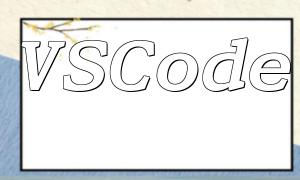PHP is a flexible and widely-used backend programming language suitable for developing various types of dynamic websites and applications. This article offers a step-by-step guide to building an online video website using PHP, making it a valuable reference for developers with some experience.
The first step in any project is to define the core features and target audience. For an online video site, essential features include user registration, video uploading, video playback, commenting, and saving favorites. It's also important to estimate traffic and user volume to inform system architecture and resource allocation.
A well-structured database is key to ensuring stable performance. Typical entities include users, videos, comments, and tags. Each requires carefully defined tables and relationships. Here’s an example:
CREATE TABLE users (
id INT AUTO_INCREMENT PRIMARY KEY,
username VARCHAR(50) NOT NULL,
password VARCHAR(255) NOT NULL,
email VARCHAR(100)
);
CREATE TABLE videos (
id INT AUTO_INCREMENT PRIMARY KEY,
user_id INT,
title VARCHAR(255),
description TEXT,
filepath VARCHAR(255),
thumbnail VARCHAR(255),
upload_time TIMESTAMP DEFAULT CURRENT_TIMESTAMP
);
MySQL is commonly used for database management due to its scalability and support.
A secure user registration and login system is fundamental. The registration form should include input validation such as email format checks and password strength verification. Passwords must be securely hashed, for example using PHP’s password_hash() function.
if (password_verify($inputPassword, $hashedPassword)) {
// Login successful
}
User sessions can be managed using PHP sessions to maintain login state securely.
Users should be able to upload video files via a user-friendly form. After upload, videos go through several processing steps like transcoding, thumbnail generation, and metadata extraction. Tools like FFmpeg are commonly used for this purpose.
ffmpeg -i input.mp4 -vcodec h264 -acodec aac output.mp4
Uploaded files should be stored in a secure server directory, and their paths recorded in the database for retrieval.
Videos can be played using HTML5’s tag or integrated video players such as Video.js. The video page should support comments, likes, and saving to favorites. Additionally, an admin panel should be implemented for managing uploaded content, including moderation and deletion features.
Optimization involves both frontend and backend strategies: compressing assets, caching, query optimization, and using CDNs to deliver video efficiently. Security best practices include preventing SQL injection, XSS, and securing file uploads. Always validate file types, restrict upload sizes, and manage file permissions carefully.
Thorough testing is essential before going live. This includes unit testing, functionality testing, performance and load testing, and security audits. Deployment can be streamlined using tools like Docker to simplify environment setup and improve maintainability.
Building an online video website is a comprehensive project covering both frontend and backend technologies. Understanding the process and mastering the key components can help developers deliver a robust video platform. With the above steps, you can create a solid MVP and continue to expand and optimize based on real user needs.








